Chamaecyparis pisifera (Japanese Falsecypress)
Michael's Opinion
This plant may be considered a bit of a tramp in the landscape since it becomes haggard with age.
Botanical Information
| Family | Cupressaceae |
| Genus | Chamaecyparis |
| Species | pisifera |
| Category | Woody |
| Type | Tree (evergreen) |
| Origin | Native to Japan. |
| Pronunciation |
Details
| USDA Hardiness Zone | 4-8 |
| USDA Hardiness Ref. | |
| Canadian Hardiness Zone | 3-9 |
| Canada Hardiness Ref. | |
| RHS Hardiness Ref. | |
| Temperature (°C) | Hardy up to 0 (C) |
| Temperature (°F) | Hardy up to 0 (F) |
| Height | 16-23 m |
| Spread | 3-6 m |
| Growth | Slow |
Description and Growing Information
| General Description | Large evergreen tree with straight trunk and open, narrow, pyramidal crown. Bark reddish-brown, fibrous, shreddy, peeling in long thin strips. |
| ID Characteristic | The Japanese Falsecypress has white lines on the underside of its scales as well as exfoliating bark. |
| Shape | Large, loosely pyramidical evergreen tree. |
| Landscape | Ideally used to the rear of a border as a backdrop to other plants. Since it is a large plant it best suited to park-like landscape. |
| Propagation | Stem cuttings. |
| Cultivation | Plant in full sun, water regularly but do not overwater. Plant in a moist, well drained soil; it will not tolerate wet feet. |
| Pests | Tip blight can be a problem in early stages of its growth. |
| Habitat | Naturally occurs in Japan, prefers moist soil and full sun, drought tolerant. |
| Bark/Stem Description | Reddish brown, exfoliates in long thin strips. |
| Flower/Leaf Bud Description | Palm shaped, brown. |
| Leaf Description | Dark green, scale like, sharp and overlapping. |
| Flower Description | Monoecious, not of ornamental importance. |
| Fruit Description | Small cones with very few scales. Scales are soft to the touch. Cones can be clustered at shoot tips. |
| Colour Description | Dark green, browns in winter. Red-brown bark. |
| Texture Description | Medium. |
Photographs
Chamaecyparis pisifera 'Nana Aurescens'
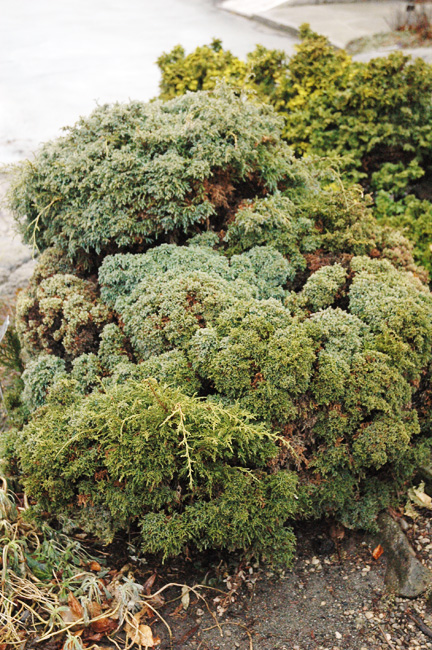
Chamaecyparis pisifera 'Squarrosa Intermedia'.
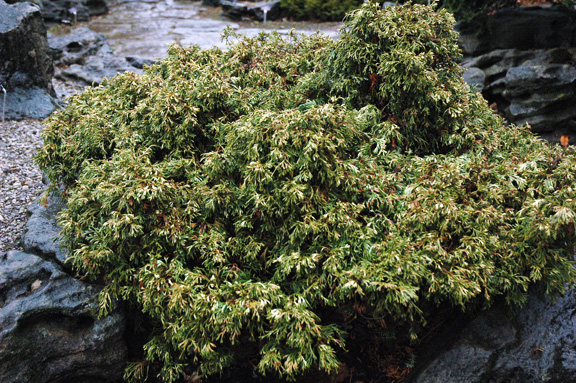
Chamaecyparis pisifera 'Mavis'.
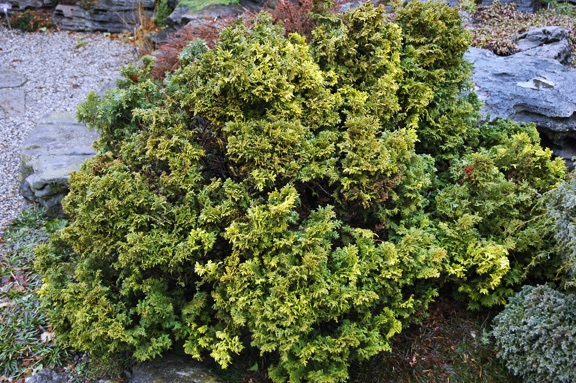
Chamaecyparis pisifera 'Compacta'.
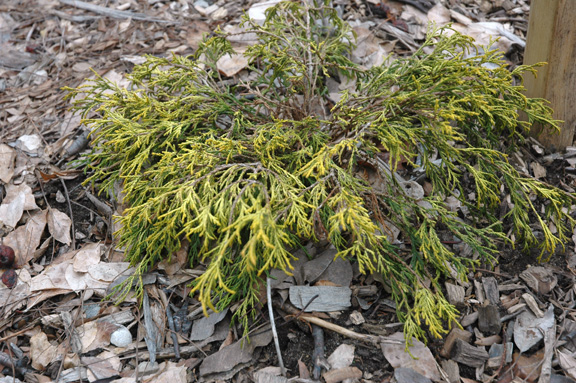
Chamaecyparis pisifera 'Lemon Thread' in the conifer garden at Fanshawe College, London, Ontario.
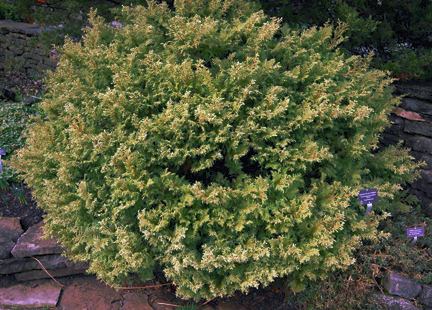
Chamaecyparis pisifera 'Snow' at Niagara Parks Botanical Garden.
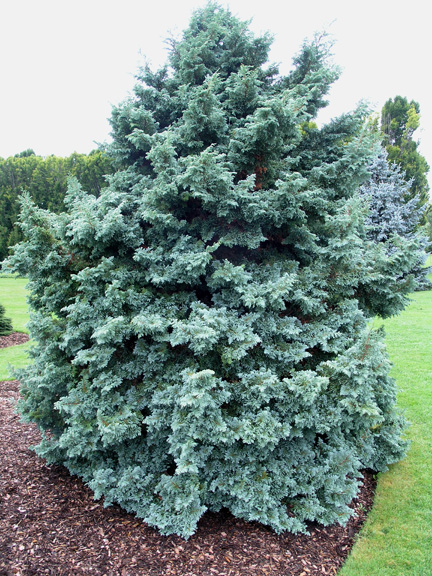
Chamaecyparis pisifera 'Boulevard'.
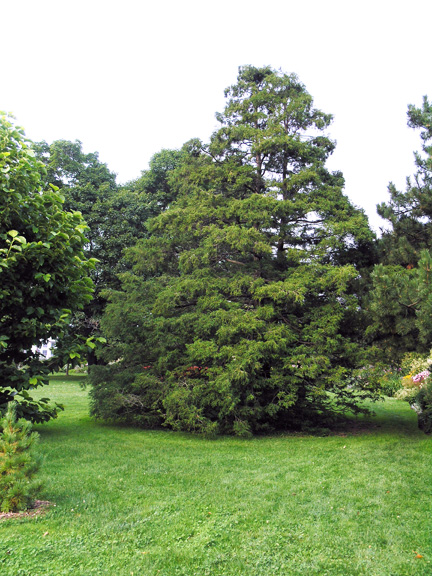
Chamaecyparis pisifera 'Filifera'.
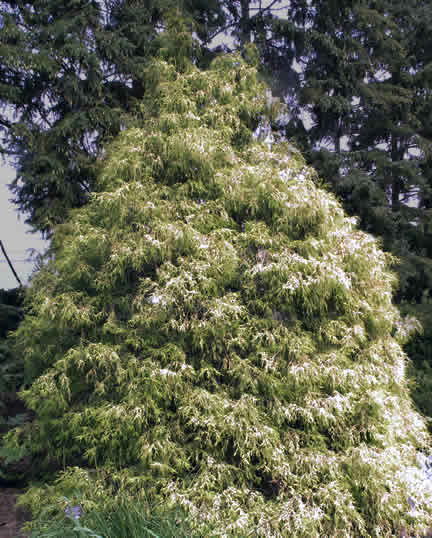
Chamaecyparis pisifera 'Filifera Aurea'.
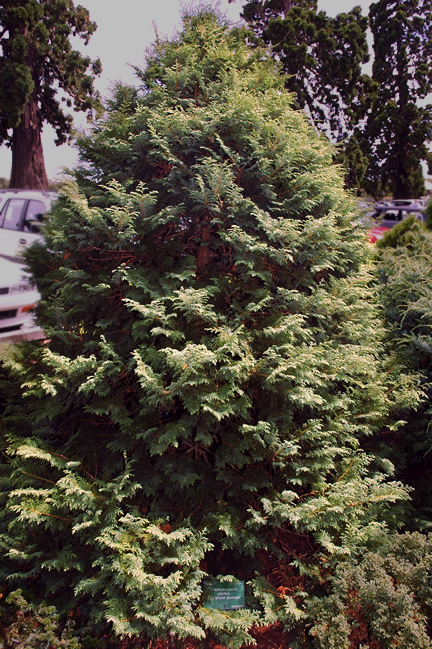
Chamaecyparis pisifera 'Squarrosa Dumosa'.
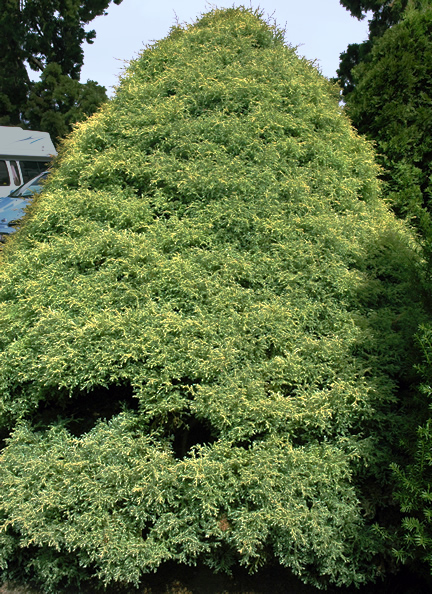
Chamaecyparis pisifera 'Squarrosa Sulphurea'.
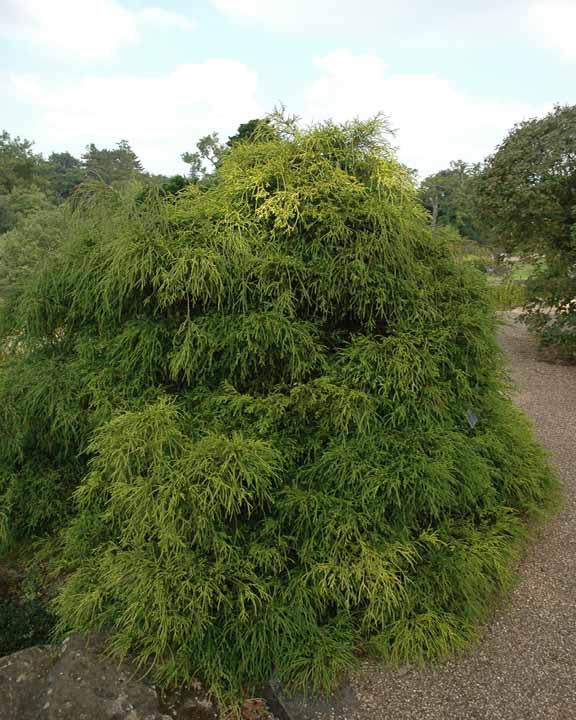
Chamaecyparis pisifera 'Sungold'.
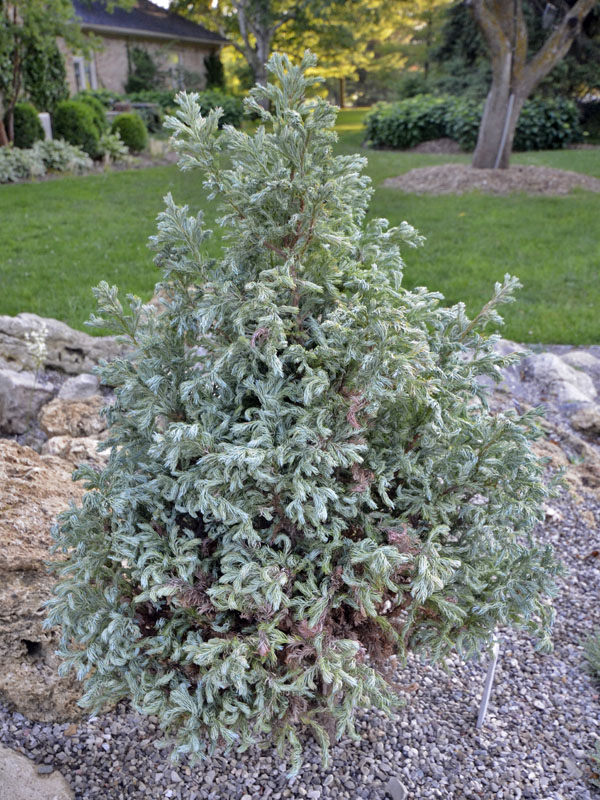
Chamaecyparis pisifera 'Curly Tops'.